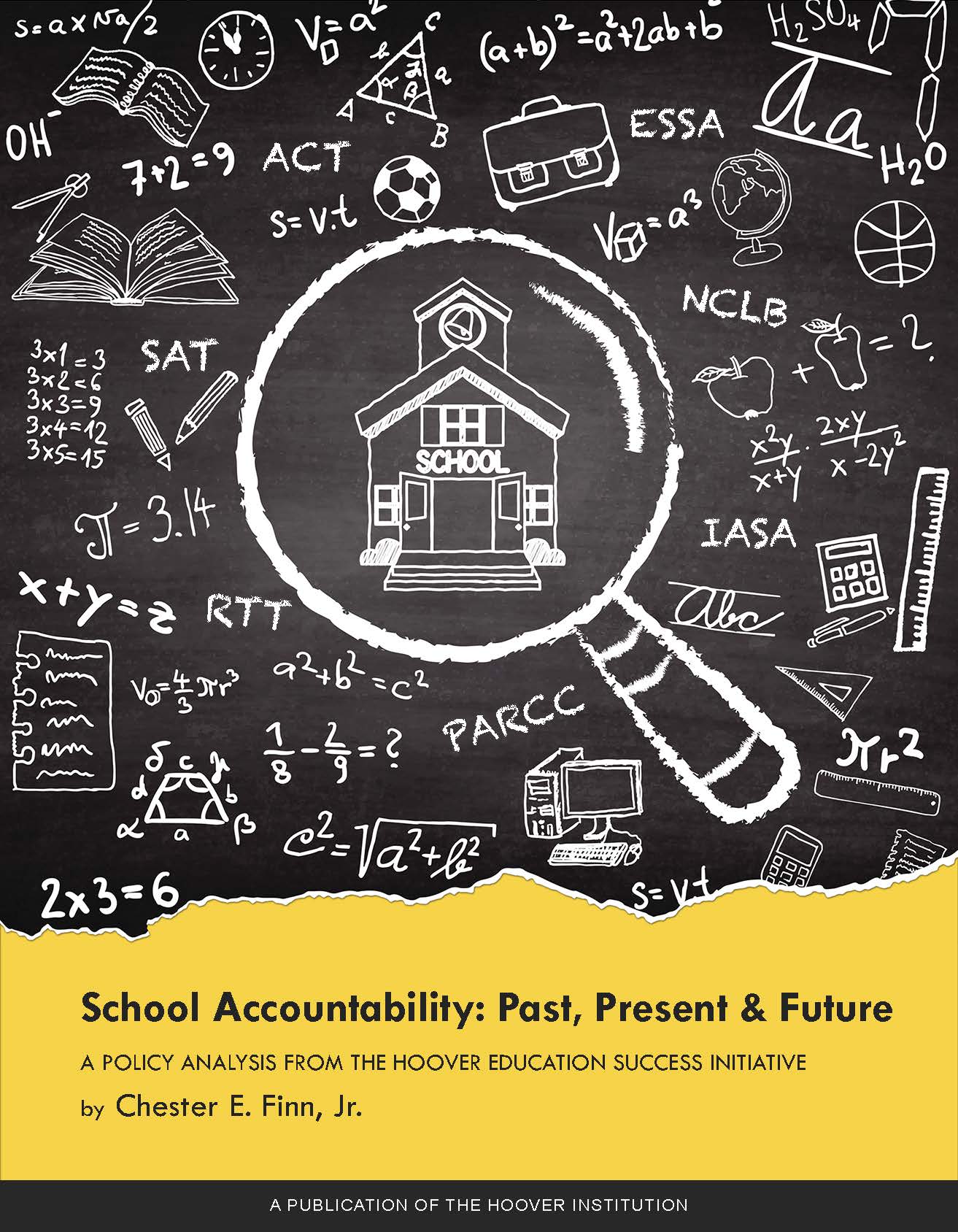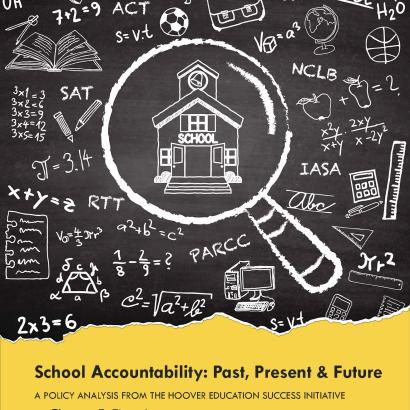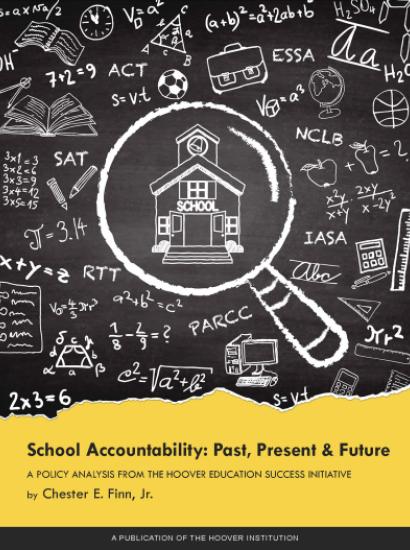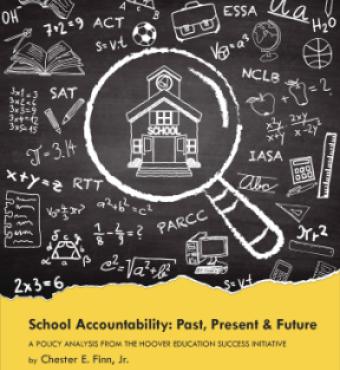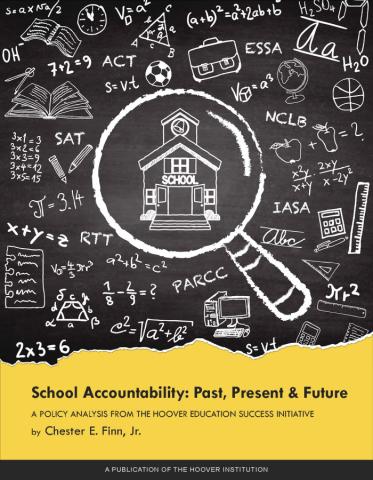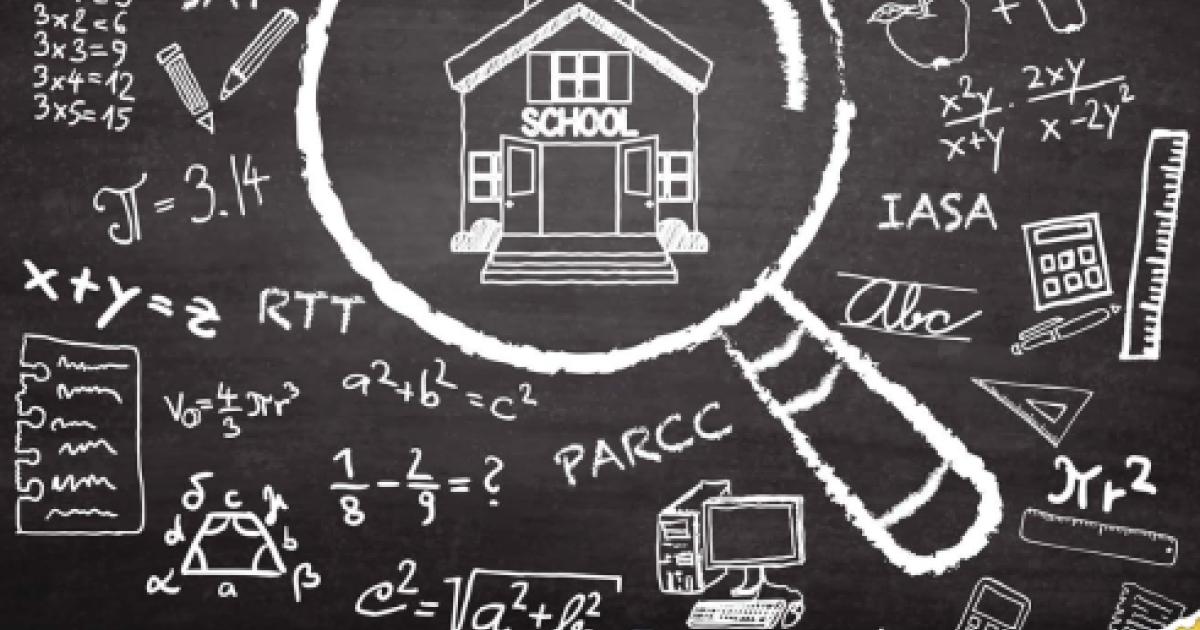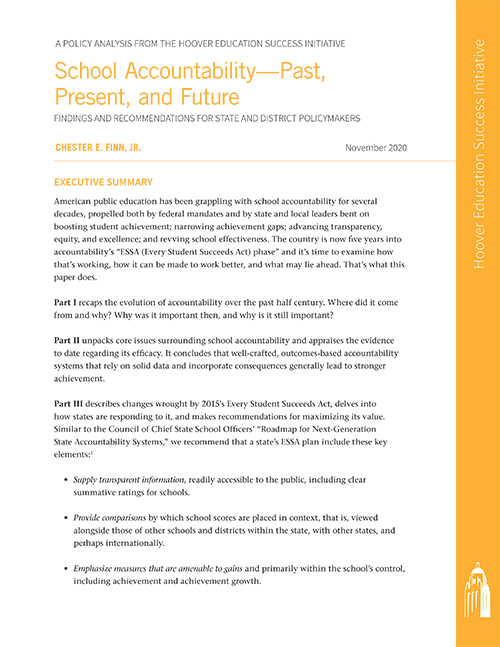American public education has been grappling with school accountability for several decades. That challenge has been propelled both by federal mandates and by state and local leaders focused on boosting student achievement, narrowing equitability gaps, advancing transparency, and boosting school effectiveness. Now five years into implementation of the Every Student Succeeds Act (ESSA), which turned such work largely over to the states, it is time to examine the past, present, and future of school accountability from an evidence-based perspective.
American public education has been grappling with school accountability for several decades, propelled both by federal mandates and by state and local leaders bent on boosting student achievement; narrowing achievement gaps; advancing transparency, equity, and excellence; and revving school effectiveness. The country is now five years into accountability’s “ESSA (Every Student Succeeds Act) phase” and it’s time to examine how that’s working, how it can be made to work better, and what may lie ahead. That’s what this paper does.
Part I recaps the evolution of accountability over the past half century. Where did it come from and why? Why was it important then, and why is it still important?
Part II unpacks core issues surrounding school accountability and appraises the evidence to date regarding its efficacy. It concludes that well-crafted, outcomes-based accountability systems that rely on solid data and incorporate consequences generally lead to stronger achievement.
Part III describes changes wrought by 2015’s Every Student Succeeds Act, delves into how states are responding to it, and makes recommendations for maximizing its value. Similar to the Council of Chief State School Officers’ “Roadmap for Next-Generation State Accountability Systems,” we recommend that a state’s ESSA plan include these key elements:1
• Supply transparent information, readily accessible to the public, including clear summative ratings for schools.
• Provide comparisons by which school scores are placed in context, that is, viewed alongside those of other schools and districts within the state, with other states, and perhaps internationally.
• Emphasize measures that are amenable to gains and primarily within the school’s control, including achievement and achievement growth.
• Employ indicators that are hard to manipulate.
• Ensure the transparent treatment of key subgroups.
• Report both proficiency and growth, equally weighted.
• Carefully select and deploy valid growth measures, whether criterion- or norm-referenced.
• Insofar as it can be accurately and fairly tracked, take account of student absenteeism, particularly chronic absenteeism.
The testing hiatus and “data hole” resulting from school closures and federal waivers in spring 2020 will make calculation of year-to-year achievement growth difficult or impossible in the short run. Variability in school operations and attendance during the 2020−21 year will also bedevil such calculations. Schools may have to substitute two-year growth (i.e., spring 2019 to spring 2021) as best it can be gauged, provided of course that they remain assiduous about 2021 assessments. The unevenness of data and fragility of calculations based on them may lead some states to suspend their summative school ratings for a year. We urge careful improvisation in the near term and a resumption of familiar calculations, comparisons, and ratings as soon as possible.
We agree with the Data Quality Campaign, the Alliance for Excellent Education, the Collaborative for Student Success, the Education Trust, and a host of civil rights organizations that “states can and should continue to measure student growth in 2021. . . . By measuring student progress between the 2019 and 2021 annual assessments, state leaders can still get the vital insights they will need to understand and continue to support student learning.”2
States should consider issuing both data-rich (but easily understood) report cards and more comprehensive information “dashboards” for individual schools.
Because ESSA does not prescribe specific consequences for poorly performing schools, state leaders should understand that without careful implementation of their accountability plans and deployment of well-considered consequences for such schools, little improvement is apt to occur.
Part IV looks to the future of school accountability, conscious that resistance to testing in particular and consequential school accountability in general have led some elected officials and education leaders to ease back on such things. We urge state (and federal) officials not to forsake results-based accountability or to shun high-quality assessments of student learning as an indispensable source of essential information as to where and how well those results are being achieved. To forgo them would cause K−12 education in America to fly blind, akin to a plane in the fog without instruments.
In Part IV, we assume that ESSA is not immortal and that, after five years of experience with it, we should identify elements of a better approach to school accountability, including, for example, a somewhat changed assessment regimen and fresh thinking about consequences. We believe that tomorrow’s accountability systems should be geared less to short-run gauges of “proficiency” and more to students’ true readiness for college, career, citizenship, and adulthood. Here, in summary form, are our key recommendations:
Assessment
• Kindergarten readiness. Although this measure ought not be used for elementary school accountability, entering kindergartners should be assessed on their readiness to succeed in school, including but not limited to their preparedness to undertake reading and arithmetic. Such information creates an essential baseline for all that follows.
• English language arts (ELA) and math prowess. States should test students’ ELA and math prowess at least in grades two or three, four, six, and eight, with the fourth- and eighth-grade assessments coincident with National Assessment of Educational Progress (NAEP) testing. Annual testing yields more precise calculations of achievement growth, but states may prefer to lighten the annual testing burden in light of the additions recommended below.
• End-of-course exams. States should add capstone (end-of-course, or EOC) exams in other core subjects during middle and high school, aligning these with high-quality curricula in those subjects, including career and technical subjects as well as the traditional academic core.
• Diplomas that mean something. With EOCs in place for key high school courses, requiring that they be passed at a satisfactory level becomes an excellent way of ensuring that diplomas attest to actual accomplishment.
For accountability purposes at the high school level, states should weigh both a school’s success in getting all students to the passing level on the EOCs (and thence to graduation) and also its success in getting as many as possible to the college/career readiness threshold and beyond.
Analysis and Reporting
Achievement and growth should remain the core criteria by which school performance is evaluated. We recommend continuing with ESSA-style data gathering on student learning, based primarily on external exams developed by states and aligned with their academic standards. Results should be disaggregated by student group and reported at the school, district, and state levels, as should growth whenever that can be calculated. Schools should continue to be assigned ratings based on their performance, and easily grasped information about that performance should be made public on websites, report cards, and dashboards.
Consequences and Capacity
What to do about troubled schools? Two approaches—and combinations of them—deserve consideration. Both depend on quality data and transparency about student and school performance, but they point in different directions. One strives to improve upon the familiar thrust of federal policy, which is to intervene in low-performing schools with an eye to making them better. The other is to stop trying to “fix” troubled schools and instead rely on informed choices by parents to place their children in better schools.
Particularly in view of mounting resistance to test-based accountability of the traditional kind, states should also attend to issues of school and district capacity (as well as their own) and adopt strategies to assist troubled schools in making the improvements they need.
Click here to download the executive summary.
ABOUT THE AUTHOR
Chester E. Finn, Jr., is a senior fellow at the Hoover Institution and a distinguished senior fellow and president emeritus at the Thomas B. Fordham Institute. He previously served as assistant secretary for research and improvement, and counselor to the cabinet secretary at the US Department of Education; and as legislative director for Senator Daniel P. Moynihan.
PREVIEW: SCHOOL ACCOUNTABILITY—PAST, PRESENT, AND FUTURE







